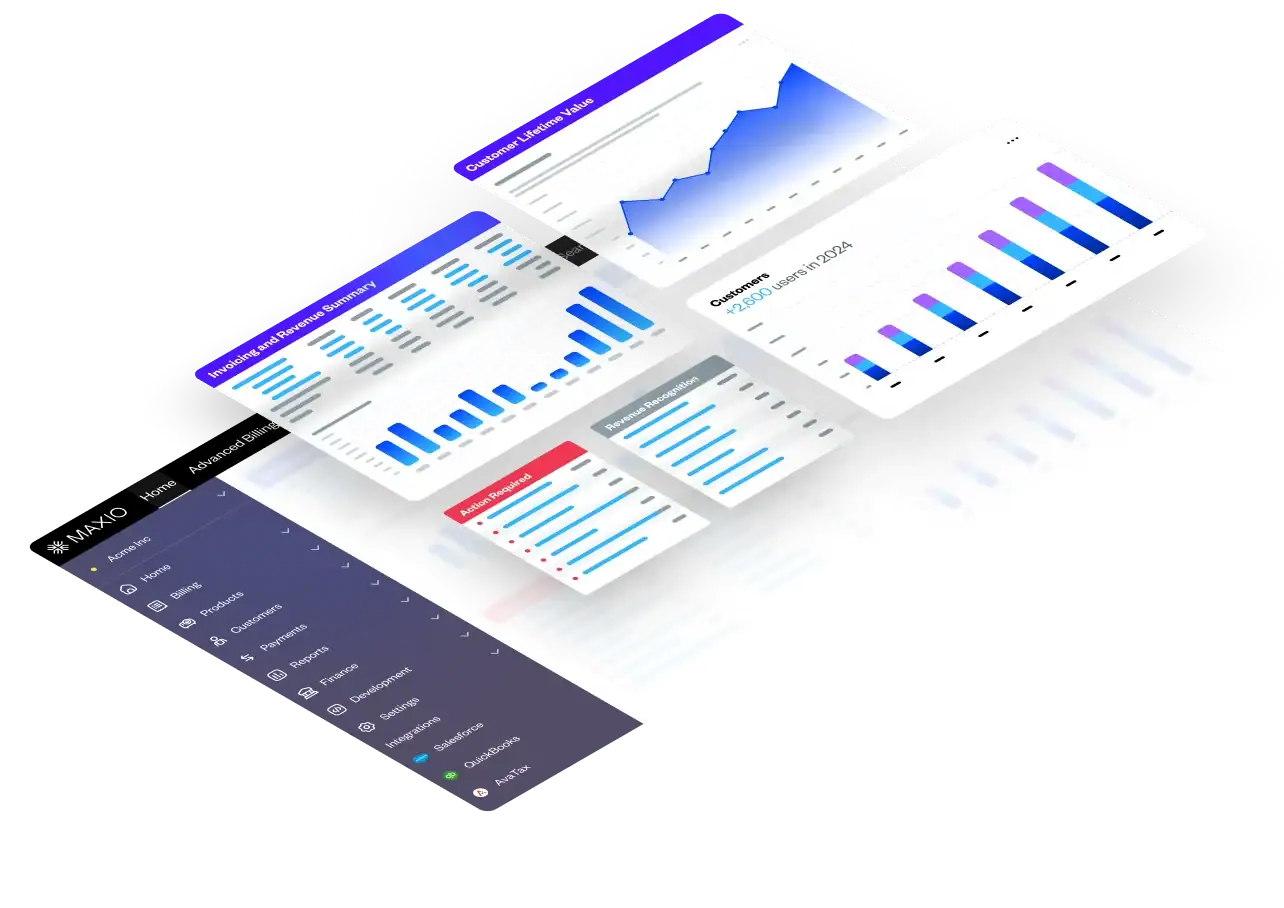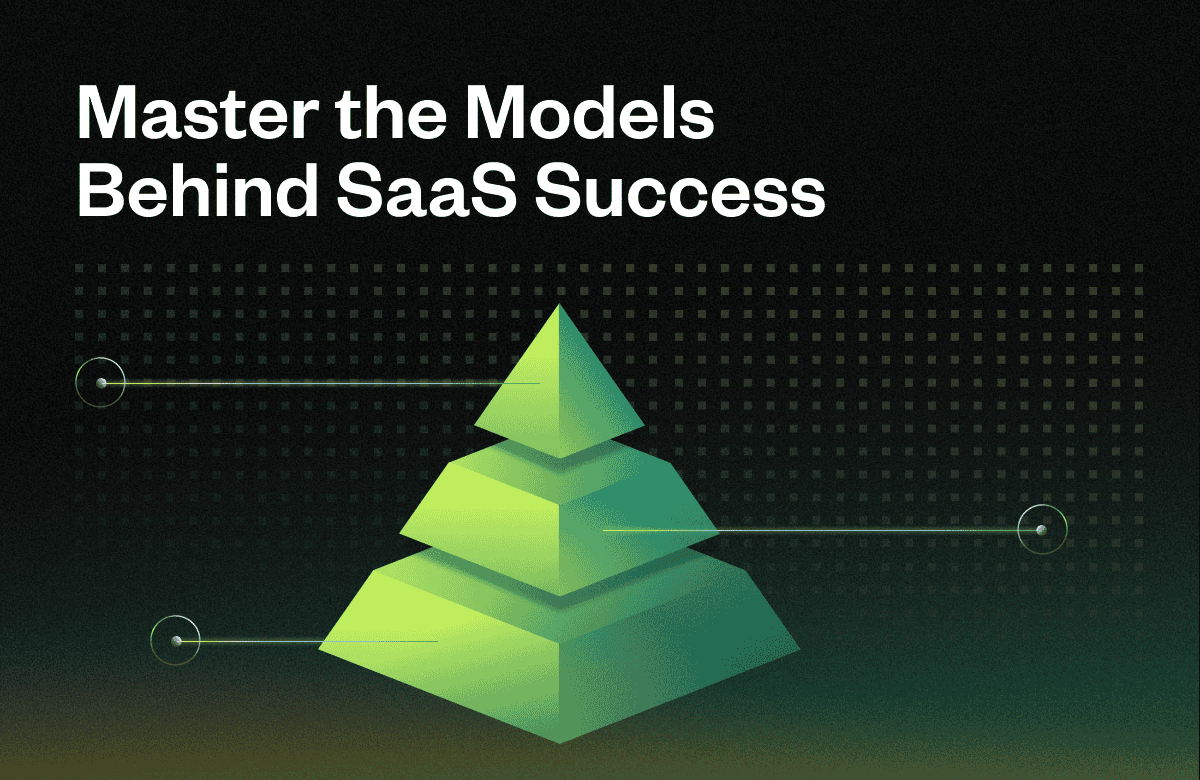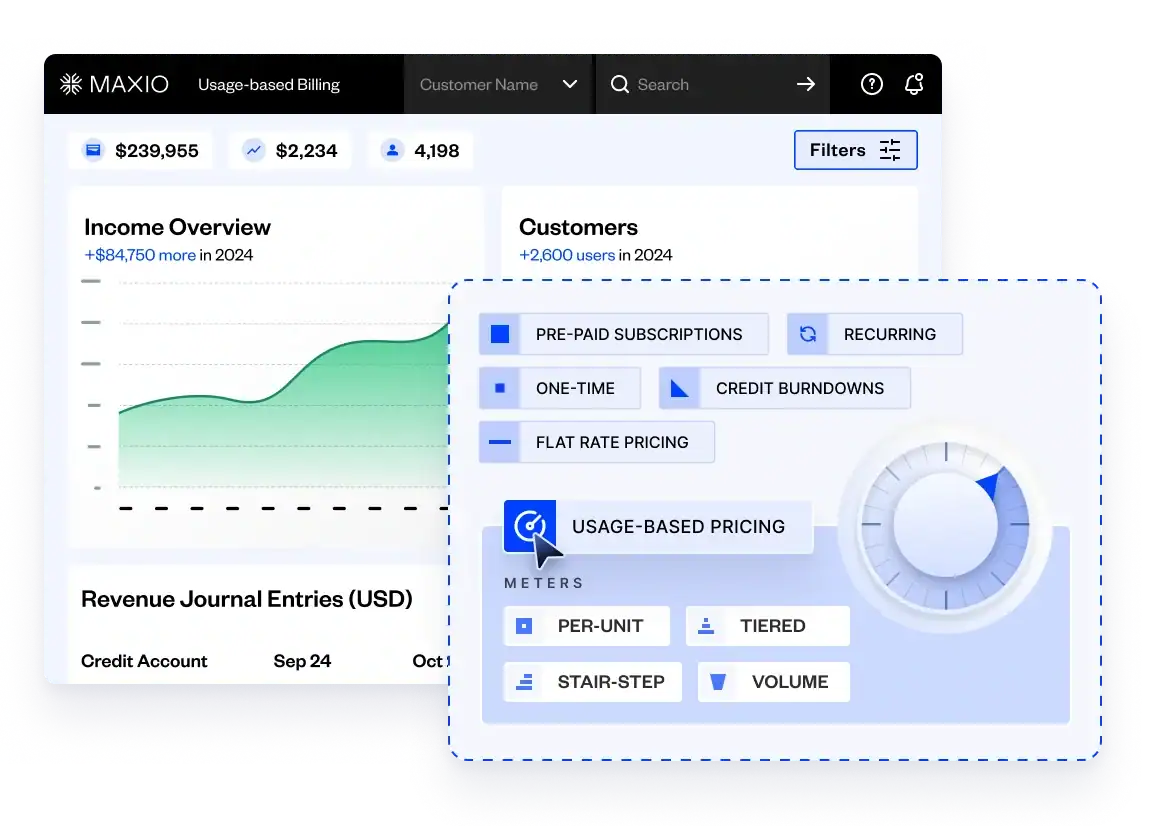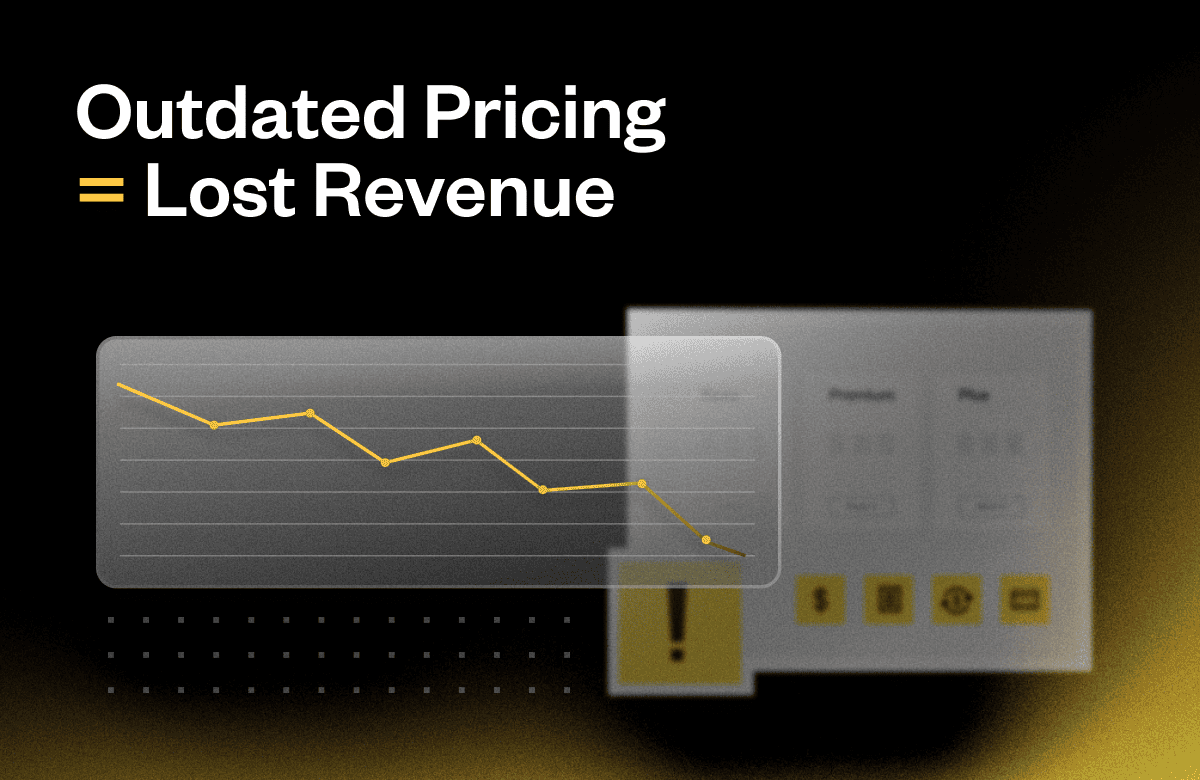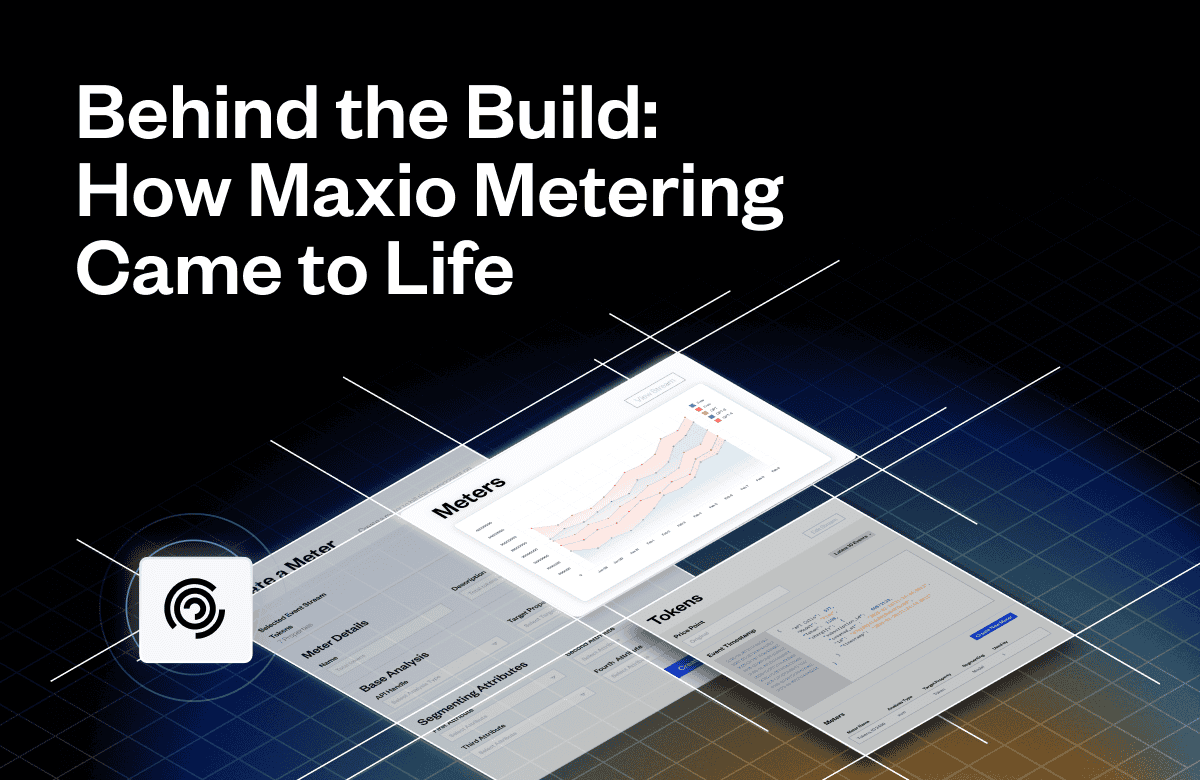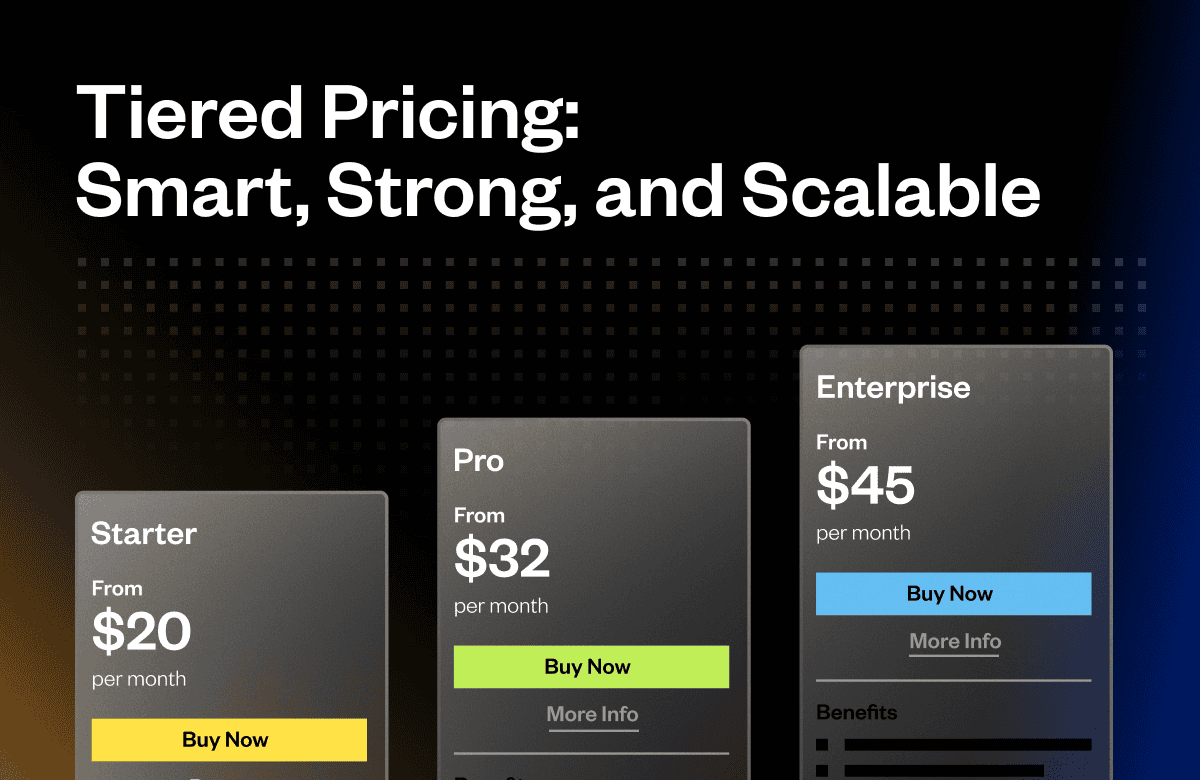SaaS pricing models are much more than just numbers on a page—they’re a core driver of how SaaS companies generate revenue, grow their market share, and retain loyal customers over time.
The right pricing structure helps align your product with customer needs, differentiate your offering from competitors, and support long-term monetization. Whether you’re targeting startups, small businesses, or enterprise teams, choosing the right approach can unlock new revenue streams, improve retention, and make your pricing page a conversion asset instead of a roadblock.
In this guide, we’ll walk through the most effective SaaS pricing models, explore real-world strategies for different pricing approaches, and share best practices for optimizing your pricing strategy as your business evolves.
What is SaaS pricing?
SaaS pricing refers to a subscription pricing model that allows customers to pay at regular intervals (typically monthly or annually) instead of making a large upfront purchase. This structure gives SaaS companies the flexibility to match their pricing plan to customer expectations while steadily growing recurring revenue.
Plus, unlike traditional software sales that rely on one-time licenses, SaaS pricing models are designed for scalability, predictability, and long-term value. With recurring payments tied to usage, number of users, or access to features, companies can evolve their pricing structure over time to reflect changing customer needs and market dynamics.
How SaaS product pricing is different from other pricing models
What makes a SaaS product unique isn’t just the delivery model—it’s how pricing influences adoption, customer acquisition, and retention. Traditional software models require large upfront investments that can create friction for small businesses and startups. SaaS, on the other hand, lowers that barrier by spreading costs over time and allowing companies to pay as they grow.
This shift allows SaaS businesses to be more responsive:
- Pricing tiers can be updated to reflect new capabilities or competitive pressure.
- Features can be bundled or unbundled based on buyer personas.
- Plans can be adjusted to better reflect the value of your product—especially when offering usage-based pricing to align cost with activity.
Popular B2B SaaS pricing strategies
B2B SaaS companies use a variety of pricing strategies to attract the right customers, optimize revenue, and stay competitive. Choosing the right approach depends on factors like the perceived value of your product, buyer personas, your competitive landscape, and how you position your product in the market.
Below are three of the most common frameworks that help guide decision-making around product pricing and long-term growth.
Value-based pricing
Value-based pricing focuses on what customers are willing to pay for the perceived value your product delivers, rather than tying prices to costs. In B2B SaaS, this often means aligning your pricing plan with business outcomes like time saved, revenue generated, or operational efficiency.
To execute this well, companies must conduct customer pricing research: collecting feedback, analyzing usage data, and assessing willingness to pay across segments. The goal is to understand how different customers assign value to your features and outcomes.
The upside? You can increase revenue and profit margin without necessarily adding more features or users. The downside? It’s research-intensive and must be continuously revisited as your pricing as strategy evolves.
Competitor-based pricing
Competitor-based (or competitor pricing) involves analyzing what similar SaaS companies charge for their services and then positioning your pricing relative to them—either slightly above, below, or directly in line.
This approach is especially common for newer companies trying to gain traction or enter saturated markets. It’s relatively easy to execute and offers a quick benchmark when building your first pricing page.
However, there are serious risks. Relying too heavily on your competitors’ strategy can lead to a race to the bottom, profit margin erosion, or a lack of meaningful differentiation. You’re also not pricing based on your product’s actual value to your audience, which may hurt customer acquisition and retention in the long run.
Cost-plus pricing
Cost-plus pricing sets your prices based on production or operating costs plus a fixed markup (e.g., 20%). It’s simple, ensures basic profitability, and is often used as a starting point for internal decision-making.
However, it doesn’t account for perceived value, customer expectations, or competitive pressure. As a result, it may lead to overpricing (if your costs are high) or underpricing (if your buyer personas would have paid more). In B2B SaaS, where margins are high and the cost to serve additional customers is often low, this method is rarely the most effective long-term strategy.
The 6 most common SaaS pricing models
There’s no one-size-fits-all approach to SaaS pricing. SaaS companies often experiment with different pricing models to meet the needs of different customer segments, whether they’re small businesses, startups, or enterprise clients. The right model can dramatically affect your ability to acquire new users, grow revenue, and scale sustainably.
Below, we’ll break down the most popular SaaS pricing models, how they work, and when each is most effective depending on your product, target market, and business goals.
1. Flat-rate pricing model
The flat-rate pricing model is the simplest option: one pricing plan, one price, and unlimited access. All users, regardless of size or usage, pay the same monthly or annual fee. It’s easy to communicate and frictionless to manage, which is why many early-stage small businesses and SaaS startups use it.
This model works best for straightforward products with a narrow set of features and a uniform user base. But it can be limiting for companies serving a different customer mix. If your product serves both solopreneurs and large team members, a one-size-fits-all price can underserve some and overcharge others—leading to churn or missed upsell opportunities.
Flat-rate pricing is most effective when simplicity is part of your product value and you don’t need to segment by usage, team size, or additional features.
2. Tiered pricing model
The tiered pricing model offers multiple pricing plans at different price points, each designed for a specific target market or customer segment. These tiers often scale by number of users, set of features, or usage limits—allowing SaaS companies to serve small businesses, mid-market teams, and enterprises from the same platform.
For example, a starter plan might include basic access for a small business, while higher tiers unlock advanced API access, analytics, or additional features for power users. This structure gives customers the flexibility to choose what fits their current needs—and upgrade as they grow.
Tiered pricing is one of the most popular SaaS pricing models because it balances accessibility with monetization. It supports different pricing for different customers, improves customer acquisition, and enables clear upsell paths that drive higher price retention.
3. Usage-based pricing model
With the usage-based pricing model, customers pay based on how much they actually use the product. This could mean charging per API call, GB of storage, number of transactions, or another measurable unit tied to value. Then, as customer usage increases, so does the price—making this model inherently scalable.
It’s especially effective for SaaS companies with a wide customer base and variable usage patterns. Rather than forcing a flat fee on a light user or undercharging a heavy one, usage-based pricing aligns cost with consumption and gives customers control over their spending.
Zapier does an excellent job of this—their pricing is separated by individual tiers, however, their pricing also scales depending on the number of automated tasks, or “zaps”, their customers use each month.
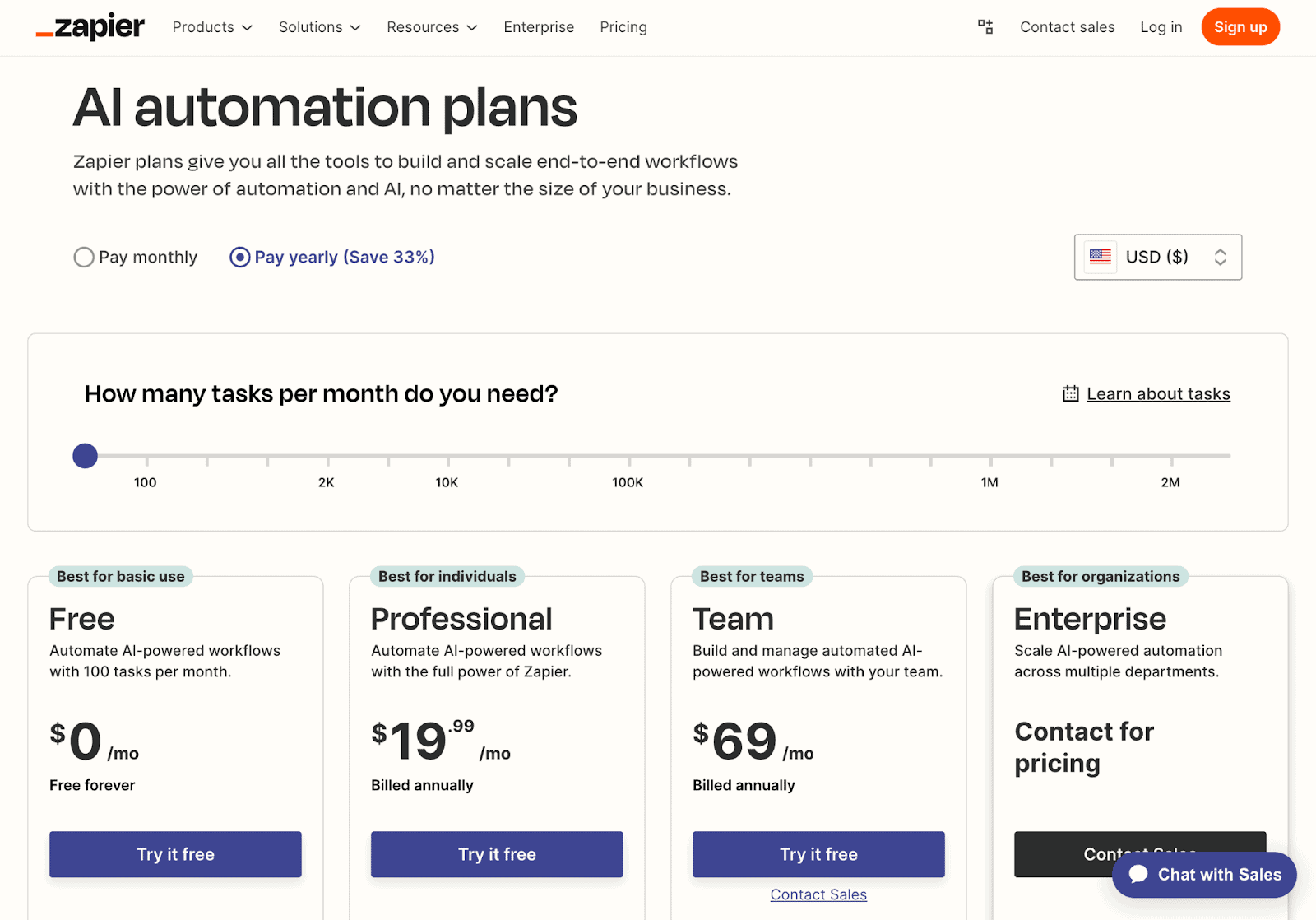
(Source)
For companies targeting developers, infrastructure teams, or transaction-heavy apps, this model improves adoption by removing upfront friction and making the pricing plan feel fair. It also creates strong expansion revenue opportunities from active users whose value grows over time.
4. Per-user pricing model
The per-user pricing model charges customers based on the number of users or team members accessing the software. This approach is simple to understand and easy to forecast, which makes it especially attractive to small businesses and IT buyers who want predictable costs.
It’s also commonly used in collaboration tools like project management or CRM platforms, where the value of the SaaS product increases as more team members are onboarded. Each new user added represents incremental value, justifying the higher price.
For instance, Slack models their pricing based on a mix of individual tiers and per-user pricing. Under this model, customers are charged for every new user they add under their designated pricing tier.

(Source)
However, this model isn’t without its drawbacks. Charging per user can discourage larger teams from adopting the product widely—especially if it creates internal debate over who “deserves” a paid seat. It can also stifle viral growth if product adoption depends on broad internal use.
Still, per-user pricing remains one of the most popular SaaS pricing models because of its alignment with business scaling—especially when paired with free trials or flexible pricing tiers that reduce upfront friction.
5. Freemium pricing model
The freemium pricing model offers a free plan with limited functionality, allowing users to try a product before they fully commit to a paid pricing plan. By lowering the barrier to entry, this helps drive product adoption—especially for small businesses, startups, or individual users that are interested in exploring a new tool.
Freemium models also typically include a product’s core features, while more advanced functionality—like integrations, advanced analytics, or additional features—is gated behind a higher price. Then, as users become more engaged or outgrow the limitations, they’re encouraged to upgrade to a paid tier.
For example, as part of Maxio’s 30-day free trial, users get access to everything from dozens of billing scenarios to a full product catalog—plus CRM and payment integrations.
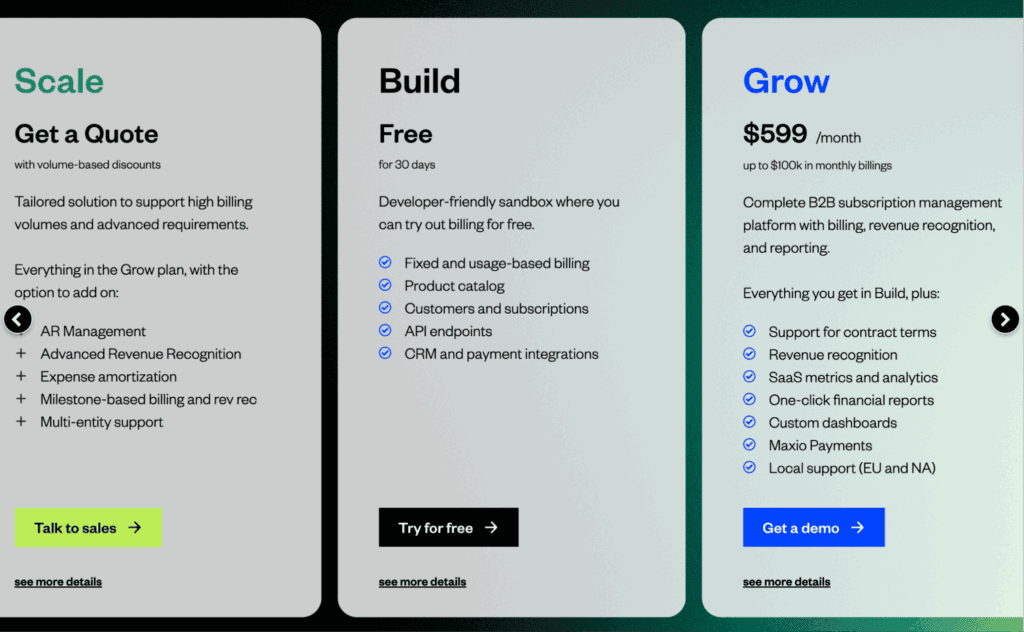
(Source)
This model supports wide customer acquisition by building trust early and turning product usage into a conversion funnel.
But it also has tradeoffs: supporting a large base of active users who don’t pay can strain support and infrastructure. It requires careful segmentation and strong upgrade paths to ensure freemium doesn’t erode margins.
6. Feature-based pricing model
The feature-based pricing model charges customers based on access to specific tools, modules, or additional features—rather than usage or number of users. Each pricing plan unlocks a different set of features, allowing SaaS companies to pick and choose the tools that meet their customer needs and budgets.
This model works well when your SaaS product serves a wide target market with varying levels of complexity or technical requirements. For example, an enterprise-grade CRM like Salesforce allows users to purchase their modules at a feature-based price depending on their specific use case.
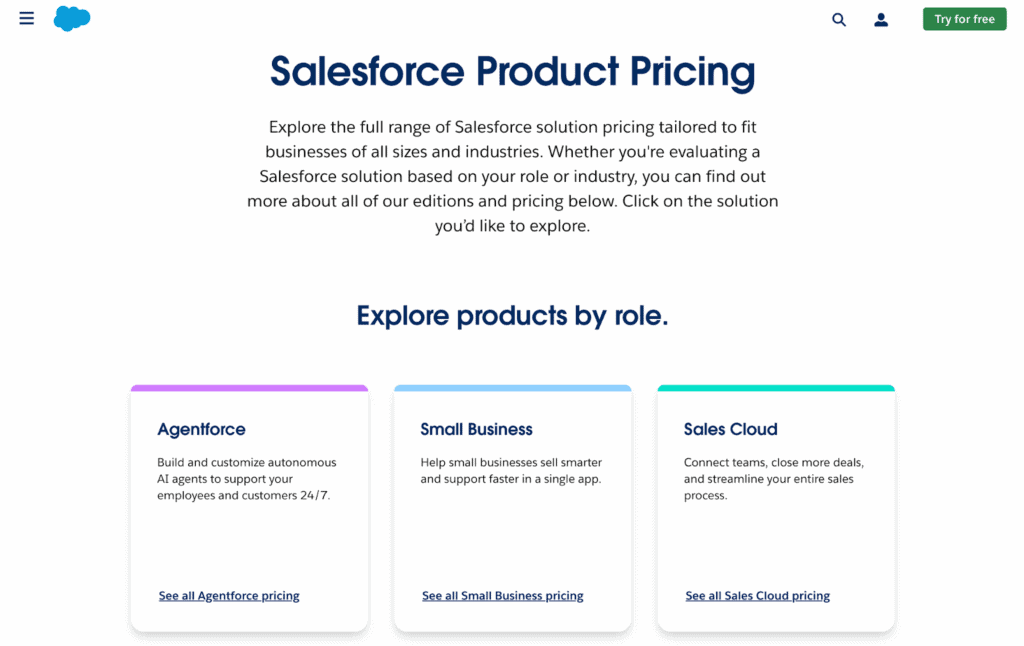
(Source)
The benefit? You can clearly communicate product value while encouraging users to upgrade as their needs evolve. The real challenge here lies in segmentation—if your pricing tiers don’t reflect real user value or are too confusing to your potential customers, you risk leaving money on the table.
Importance of choosing the right pricing model
Your SaaS pricing model isn’t just a financial decision. It’s also a strategic growth lever that can be used to shape the future trajectory of your business.
The right pricing structure directly impacts your ability to generate revenue, attract new customers, and retain them over time. It also shapes your overall value proposition and influences everything from your pricing page layout to product packaging and go-to-market messaging.
Ultimately, strategic decision-making around your pricing will help you build a solid foundation for long-term success, especially as your product evolves and pricing changes are introduced.
Increase revenue and profitability
A well-structured pricing model can stimulate revenue growth through optimized pricing tiers, strategic add-ons, and thoughtful price increases. Then, by aligning these plans with customer segments and usage behaviors, you can reduce churn and capture more value from your existing power users.
For example, a SaaS company that introduces a premium plan with additional features and white-glove support can upsell its existing customers and increase profitability without acquiring more users.
Improve customer acquisition and retention
Your pricing model is also often your first impression—and a poor one can derail customer acquisition before it starts. A clear, frictionless structure reduces confusion on your pricing page, helps users self-select the right plan, and eases onboarding. Additionally, offering freemium plans, trial periods, or tiered options that match new customers’ expectations can also drive stronger retention, as users scale within your product instead of outgrowing it.
Align pricing with customer value
When pricing reflects the true value your product delivers, customers are much more likely to convert and stick around. Value-based pricing ensures buyers feel they’re paying a fair price for meaningful outcomes (and not just access to features). This alignment not only boosts conversion rates but also helps your team better communicate your value proposition, especially when rolling out new features or adjusting plans.
Enable business scalability and market growth
Finally, choosing a flexible, future-ready pricing model will allow you to grow into new markets, support diverse customer segments, and adapt as your offering matures. Whether through add-ons, usage-based plans, or segment-specific packages, the right pricing helps you meet evolving customer needs without overhauling your existing monetization model.
Best practices for optimizing your SaaS pricing strategy
Effective pricing isn’t something you set once and forget. It’s a continuous process of decision-making, experimentation, and iteration. And as your product, customer base, and market positioning evolve, so should your pricing.
Here are a few best practices SaaS companies can use to refine their pricing strategies over time:
- Continuously test and refine your pricing model: A/B testing different pricing structures can reveal which combinations of plans, features, and messaging drive the best conversion rates. Even small tweaks—like moving a feature to a higher tier or changing the format of your pricing page—can have a measurable impact.
- Use customer feedback to adjust pricing tiers: Surveys, user interviews, and product usage data can surface whether your pricing tiers match customer expectations. If users consistently undervalue certain add-ons or overlook new features, it may be time to restructure how value is packaged and priced.
- Utilize data to track pricing performance: Key metrics like monthly recurring revenue (MRR), churn rate, and customer lifetime value (CLTV) are essential for evaluating pricing health. Tracking plan upgrades, downgrades, and expansion revenue helps guide pricing changes with confidence.
- Communicate pricing changes transparently: When rolling out price increases or restructuring plans, communicate early and clearly. Let customers know what’s changing, why it’s happening, and how it impacts them. This kind of transparency builds trust and reduces the likelihood of churn.
- Align pricing with your value proposition: Your pricing should reinforce what sets your product apart. By using a value-based pricing approach, SaaS companies can highlight their unique advantages—whether that’s through powerful additional features, better support, or seamless integration with workflows.
- Offer flexibility with add-ons and discounts: Strategic add-ons and time-sensitive discounts allow you to attract new customers while increasing revenue from existing ones. Whether it’s bundling new features or offering temporary incentives, flexibility in pricing can support both growth and retention.
Manage your SaaS pricing with confidence using Maxio
Your pricing model directly impacts how you monetize, retain customers, and scale in a competitive market. Whether you’re serving startups or enterprises, the right structure drives both growth and differentiation.
That’s exactly why we built Maxio: to help SaaS companies manage their pricing with precision and capture the full value of their SaaS. From real-time analytics and automated adjustments to customer segmentation and flexible subscription model support, our platform gives you the tools to adapt as your business evolves. Ready to scale smarter? Get a demo or explore our subscription billing solutions today.
